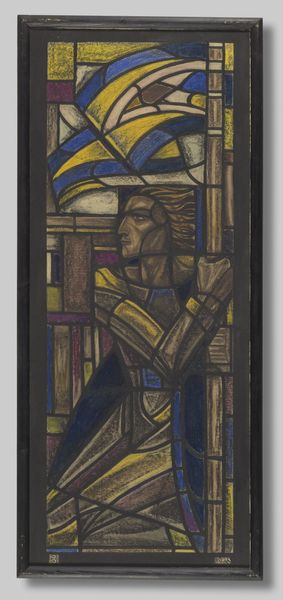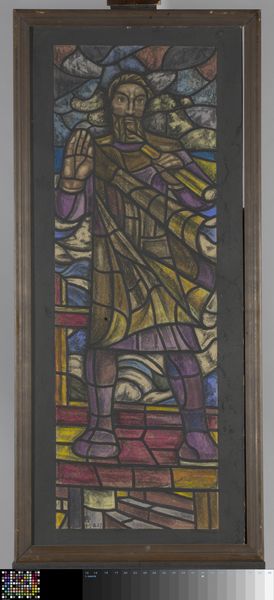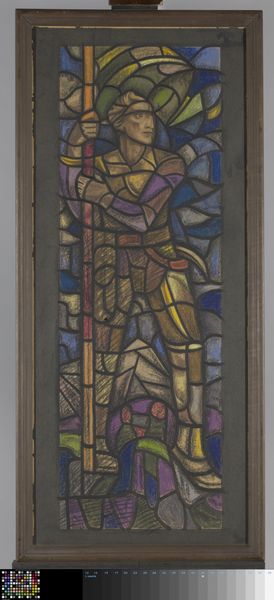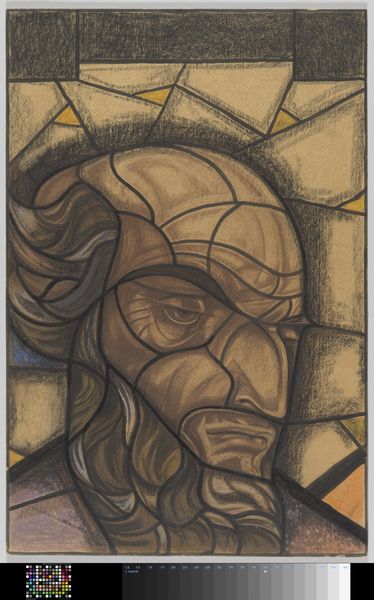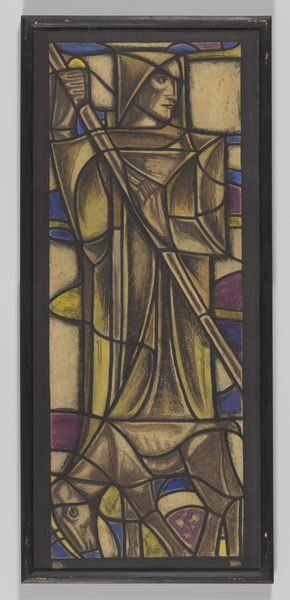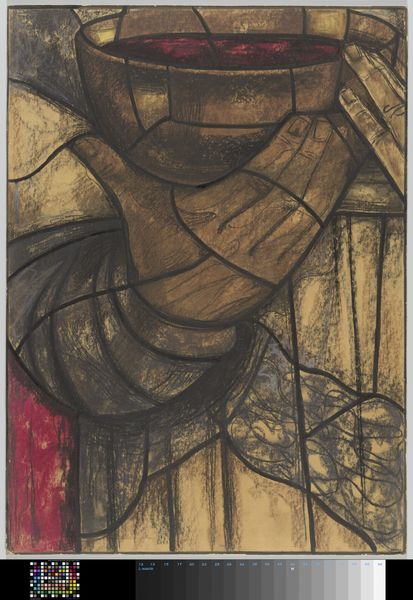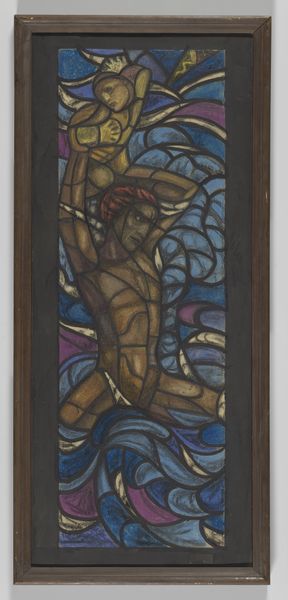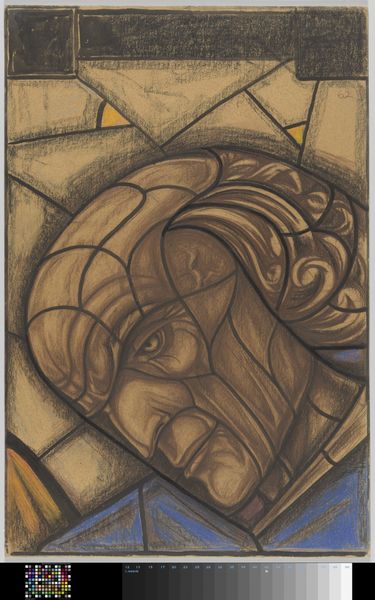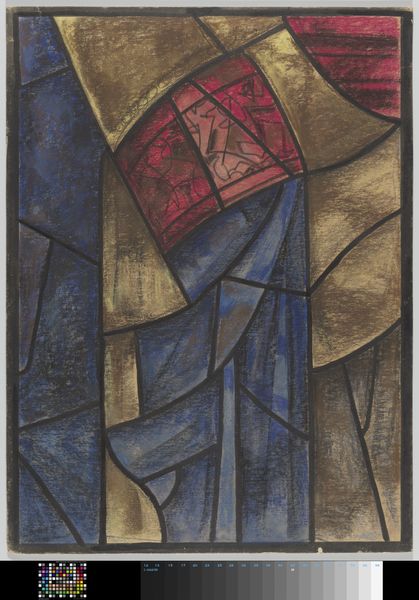
Dimensions: height 1350 mm, width 580 mm, height 1300 mm, width 530 mm
Copyright: Rijks Museum: Open Domain
Editor: So, here we have Richard Roland Holst’s "Ontwerp voor raam in het Amsterdams Lyceum" from 1922, held here at the Rijksmuseum. It’s a coloured pencil drawing that appears to be a design for a stained-glass window. The palette is subdued, almost muted. It depicts a figure in a fragmented, almost cubist style set against a landscape. It's... intriguing. What strikes you most about it? Curator: The striking aspect is how this piece functions as a social document. It was intended for a school. Therefore, we must ask: what sort of message was being presented to these young minds? Holst was a socialist. How do you read this "stained glass" design in that context? Editor: I guess I hadn't considered the message it conveys. It's definitely not your traditional biblical scene, right? The figure is almost severe, but dignified, gazing out towards the abstract landscape. Was he advocating for a more socially conscious or progressive view of education through his work? Curator: Precisely. Holst was deeply involved in the Arts and Crafts movement, promoting the social function of art. He felt art should be integrated into everyday life, reflecting and shaping societal values. Consider the chosen medium: a stained-glass *design*. Public art with potential moralistic aims. Who do you think this person portrayed is, and why they have been included within the art displayed within a place of education? Editor: Perhaps it represents a figure of wisdom or progress. Maybe someone embodying the ideals the Lyceum aimed to instill in its students? Like, a thinker? Curator: Interesting. And consider that, in the early 20th century, education was evolving. Art Nouveau itself, of which Holst was a practitioner, had social underpinnings of democratizing taste. Holst’s design might reflect these shifts in thought, promoting modern thinking for new generation of students. Editor: I hadn’t thought of the Art Nouveau connection, that it might be an attempt to democratize art! I went into this conversation seeing a drawing for stained glass. I leave thinking of a subtle statement about progressive values within a historical and very specific context. Thanks for the insight! Curator: My pleasure.
Comments
No comments
Be the first to comment and join the conversation on the ultimate creative platform.
